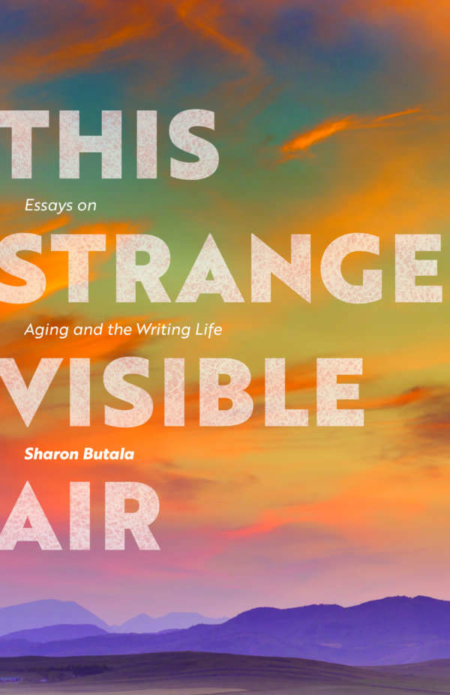
by Mary Ann Moore | Oct 7, 2021 | A Poet's Nanaimo
Sharon Butala’s husband died when she was two weeks short of her sixty-seventh birthday she says in the first essay, “Against Ageism,” in her new book of essays on aging and the writing life: This Strange Visible Air (Freehand Books, 2021).
As she was born in 1940, Sharon is 81 years old this year. She has been on her own for over a decade and writes of loneliness in “Open Your Eyes” saying: “I was lonely because I had no significant other reading the newspaper in the other room.”
Sharon recalls being eight years old, living in a village in central Saskatchewan, as a little girl. One “hot Friday afternoon in June,” she wandered off from a softball game being organized on the baseball diamond. She knew, as a small child and not athletic, she’d be the last chosen for any team.
On the front steps to the empty school, Sharon sat alone. Although an older girl had seen her there, either she didn’t let anyone know or if she told a teacher, the teacher chose to leave Sharon alone.
From research Sharon has done about loneliness, she shares a quote by Judith Shulevitz from The New Republic in 2013: “And yet loneliness is made as well as given, and at a very early age. Deprive us of the attention of a loving, reliable parent, and, if nothing happens to make up for that lack, we’ll tend toward loneliness for the rest of our lives. Not only that, but our loneliness will probably make us moody, self-doubting, angry, pessimistic, shy, and hypersensitive to criticism.” It’s a passage that Sharon says, caused her to freeze, “so accurate a description it was of how I gradually, over my adulthood, have come to see myself.”
At the end of her essay, Sharon asks, “But if my teacher had rescued me from my desire for solitude, and my self-willed loneliness, would I be a writer today?”
Burning the Journals
As many of us grow older, we wonder what will happen to our handwritten journals. Sharon has a gas fireplace so went to a friend’s house who had a wood-burning fireplace where she could burn her journals. She says in “Cold Ankles”: “The journals so embarrassed me that I decided to burn them all while I still could, the elderly person on her own being all too well aware that at any moment the Great Catastrophe can strike.”
Stopping to read some of the dreams she had recorded on the journal pages before she threw them into the fire, Sharon saw that some of them “turned out to be prescient.”
The title of the essay is from this passage: “Last night I caught myself thinking I should buy some new socks, as winter is approaching, and my ankles are already cold.”
As for the journals, she says: “And I can’t tell you, even now, if burning my journals was a good or a bad think to have done. If burning my journals changed anything, about the life they recorded or my life to come.”
An Unsolved Murder
I’ve read other books by Sharon Butala and particularly appreciated The Perfection of the Morning: An Apprenticeship in Nature, one of her early nonfiction books. I haven’t read The Girl in Saskatoon: A Meditation on Friendship and now I’m especially curious. Sharon writes of the subject of that particular book in her essay: “The Murder Remains Unsolved.”
“2021lmarks fifty-nine years since beauty queen Alexandra Wiwcharuk was beaten, raped, and murdered, and her body buried in a shallow grave in a copse of trees near the weir on the northeast bank of the South Saskatchewan River in Saskatoon, Saskatchewan.”
A few weeks before the discovery of her murder, Alexandra had turned twenty-three; she had graduated from nursing school and was employed at Saskatoon City Hospital. Sharon was fourteen when she met Alex and although they weren’t friends, they knew one another from high school activities.
The murder was never solved and while no harm came to Sharon as she was researching her book over a period of ten years, there was some harassment by phone and other close encounters with cars. Men she wanted to talk to avoided her. And someone anonymously “said that I would be killed if I kept on asking questions . . . “
Sharon says she learned about corruption, class, misogyny and evil. “Also, slowly, over the years, I have begun to see better what I specifically need to fear, and to separate most of that from what doesn’t need to be feared. Now, at eighty, my fears come mostly (but not all) from being an old woman in an old-woman-hostile world.”
The Writing Life
In “Vanished Without a Trace,” Sharon describes her writing life. She published her first book, a novel, in 1984 when she was forty-four. She had begun to write at thirty-eight, leaving her plan to be a painter, behind.
Sharon was a cattle rancher’s wife and rose at 5 a.m. as her husband did, going to her desk to write for two to six hours every day, “weekends and holidays included.” As she “lived in the middle of it,” Sharon wrote about rural western Canada.
“I gave up everything for writing, “she told a television interviewer. And while she thought one night, that she would give up her writing for her husband, child, mother, sisters or friends who needed her, she later acknowledged she was a “liar.” What came to Sharon was the knowledge, “that I would always put my writing ahead of any other significant demand on me; that there was nothing and nobody for whom I would s stop.”
It’s startling to realize that although she says her “sales record was still good enough to get me a publisher,” the ten percent she received “wouldn’t pay the rent, and the big-money prizes continued to elude me.” No wonder writers need to have speaking gigs, work in bakeries and bookshops, or teach.
In 2018, the Writers’ Union of Canada reported that writers’ “incomes had dropped twenty-seven percent since 1998; eighty-one percent of writers now had incomes below the poverty line; worse, female writers now earned fifty-five percent of what male writers earned.”
In August 2007, when her husband Peter died, Sharon “became the sole owner of a bank account that, if it did not make me rich, left me able to live as I always had . . “
At the end of her seventies and in good health, Sharon says in her essay that she is having “a burst of late life creativity.” She tells friends: “I haven’t much time left; I have to get everything down before I depart.” What keeps her writing is the same motive she began with which is: “I continue to have ideas that I need to explore through writing. I can see no reason to quit, for what else would I do with myself? After years of the hardest struggle, the misery of it, the pain and the doubts each day as I tried to find the right words for the idea whose shape I was struggling to reveal, writing is coming easily now, and flows.”
Perhaps Sharon has given up the award and contest-winning aspect of writing and is finding courage and solace in her writing. I know that writing will remain for me the way I make my way through life and I appreciate being in circles where we write together and share aspects of our queries and our discoveries.
Sharon’s final essay, “On the Pandemic” dated May 28, 2020, was written during the early months of the pandemic. At that time, she knew no one who was ill and no one who had died. As an introvert, life during “lockdown” wasn’t all that much different for her. She did wonder though “which would happen first: the gradual lessening of the lockdown, or our complete descent into insanity.”
 Hopefully it was the gradual lessening of the lockdown so that Sharon could see her friends again. Sharon has calculated how many years she has left and I find myself thinking of that as well. Most important, is how we spend our days: writing, not for any awards, but because we need to. And while we’re at it, we can celebrate the desire and imagination that continues to nourish us.
Hopefully it was the gradual lessening of the lockdown so that Sharon could see her friends again. Sharon has calculated how many years she has left and I find myself thinking of that as well. Most important, is how we spend our days: writing, not for any awards, but because we need to. And while we’re at it, we can celebrate the desire and imagination that continues to nourish us.
Lorna Crozier, another Saskatchewan writer based for many years in North Saanich on Vancouver Island, says: “Oh, help me find the mettle to resist the call to go quietly into that good night. No matter how many years under my belt, may I have the audacity to open my mouth and wail. In the same essay, “Running/Writing For Your Life” (The New Quarterly, Summer 2021), Lorna says: “How will I touch with words those places aging makes tender. I don’t know, though I started to do that about three books ago. What I do know is that the days are shrinking, and that as I set out into the lengthening dark, it is a journey I must embark on alone.”
Still, Lorna will continue because as she says: “I can’t imagine a life without poetry, without writing poetry, I have to believe that the sheer wild joy of it will lead me to places I haven’t gone before, places where I can discover some shard of beauty, whether painful or joyous. These are the risks I take, the nerve I ride on.”
It’s true that beauty discovered may be painful or joyous. We remain curious. As John Gould says of This Strange Visible Air by Sharon Butala: “The insight embodied in this book doesn’t come free with age, but as the payoff for decades of fine attention, of impassioned curiosity.”
by Mary Ann Moore | Sep 3, 2021 | A Poet's Nanaimo
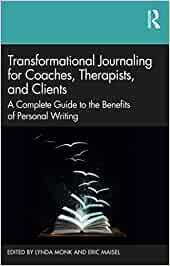 There are many benefits to journaling as the editors and writers of this new, comprehensive collection, Transformational Journaling for Coaches, Therapists, and Clients (Routledge, 2021) illustrate. Among them are gaining perspective, increasing clarity with life decisions, tapping into inner ways of knowing, noticing and clearing limiting beliefs and patterns, and writing the story one wants for their life. As a journal keeper since I learned to write, I can agree with and affirm all of those benefits of personal writing. “Our life narratives . . . hold the thread of our values and desires, while also weaving us into connection with others and the world we live in,” say the co-editors Lynda Monk and Eric Maisel.
There are many benefits to journaling as the editors and writers of this new, comprehensive collection, Transformational Journaling for Coaches, Therapists, and Clients (Routledge, 2021) illustrate. Among them are gaining perspective, increasing clarity with life decisions, tapping into inner ways of knowing, noticing and clearing limiting beliefs and patterns, and writing the story one wants for their life. As a journal keeper since I learned to write, I can agree with and affirm all of those benefits of personal writing. “Our life narratives . . . hold the thread of our values and desires, while also weaving us into connection with others and the world we live in,” say the co-editors Lynda Monk and Eric Maisel.
Among the coaches and therapists who have contributed to Transformational Journaling are some who describe their early days of keeping a journal. Now they’ve become counsellors advising others to do the same. Nicolle Nattrass for instance who has contributed “Creative Journaling for Self-Care,” remembers a diary with a key where she found “journaling was a soft place for me to land.” Nicolle is a Certified Addiction Counselor, playwright, professional actress and workshop facilitator who lives on Vancouver Island, B.C.
Lynda Monk who is co-editor of the book and director of the International Association for Journal Writing (IAJW) also remembers a personal diary with lock and key, realizing during adolescence, “Journaling emerged as something that I did to solve problems, express my feelings, and capture my special memories of daily life.”
 Following her career as s a social worker, Lynda began a training and coaching business specializing in burnout prevention for helpers, healers, and leaders. Her contribution to the collection, “Journaling for Coach and Therapist Self-Care,” has five tips for helping professionals in which Lynda says: “Be sure that if you are recommending journaling to your clients, that you are also engaging with this transformational healing tool in your own life.” She says: “Write about how you are feeling and your own needs and responses, versus the details of your client’s situations.”
Following her career as s a social worker, Lynda began a training and coaching business specializing in burnout prevention for helpers, healers, and leaders. Her contribution to the collection, “Journaling for Coach and Therapist Self-Care,” has five tips for helping professionals in which Lynda says: “Be sure that if you are recommending journaling to your clients, that you are also engaging with this transformational healing tool in your own life.” She says: “Write about how you are feeling and your own needs and responses, versus the details of your client’s situations.”
(Photo of Lynda Monk)
A. M. (Anne) Carley, a creative coach, has been journaling since childhood as well. She remembers writing in a “green spiral notebook” and says: “Over the decades, my journal has become a portal to my wisest, best self.” (from “How Journaling Benefits Your Coaching and Your Clients.”)
There are well-known contributors to the book such as its co-editor Eric Maisel, PhD who has written over fifty books. His essay, “The Focused Journal Method,” is a method of self-inquiry. Others whose names have been familiar to me for years include Kathleen Adams, founder/director of the Center for Journal Therapy; Lucia Capacchione author of The Power of Your Other Hand; and poet and writer Sheila Bender, author of several instruction books on writing. Sheila’s contribution is “Refreshing Experience with the Most Powerful of Writing Craft Tools.”
John Evans is another whose work I have read as he co-authored a book with James Pennebaker called Expressive Writing: Words That Heal. John often teaches at Duke Integrative Medicine and Duke’s Health Humanities Lab and has a private practice at Psychology Associates in Chapel Hill, NC. His essay for this collection is “The Dao of Expressive Writing to Heal” co-authored with Shu Cao Mo, a social entrepreneur advocating for individual and collective transformation through arts and education.
Whether well known or less known to readers, all contributors have something valuable to offer, from their own experience and dedicated research. Following each chapter is a list of tips for counsellors and coaches for working with their clients. There are also tips for clients and journal keepers followed by journaling prompts.
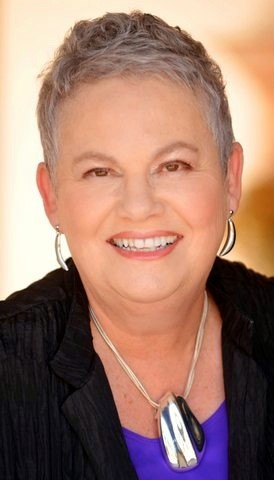 As Susan Borkin, PhD points out in “A Therapist’s Guide to Using Journaling with Clients,” “[Therapeutic journaling] is an evolving, creative, organic process with few actual rules.” Susan is a psychotherapist, speaker and author of three books on the transformative power of journaling. (Photo of Susan Borkin)
As Susan Borkin, PhD points out in “A Therapist’s Guide to Using Journaling with Clients,” “[Therapeutic journaling] is an evolving, creative, organic process with few actual rules.” Susan is a psychotherapist, speaker and author of three books on the transformative power of journaling. (Photo of Susan Borkin)
Hannah Braime has some good ideas in her essay, “Journaling for Busy Coaches and Clients”. Hannah is a creative coach and author of five books on journaling and self-care. One of her ideas is creating lists such as “10 new things I want to try this year” or “5 places I want to see during my lifetime.” I’m a big fan of lists such as books I’ve read, books I want to read, books I plan to write!
Gail Heney who works with women in recovery has contributed “Writing Through Recovery.” She acknowledges in her essay that she got sober in 2006.
Sandra Marinella wrote a wonderful book, The Story You Need to Tell, and teaches at Integrative Health at Mayo Clinic in Phoenix. Her essay is “Journaling Your Stories for Growth and Healing” in which she outlines “five stages of writing to heal and transform your story and your life.”
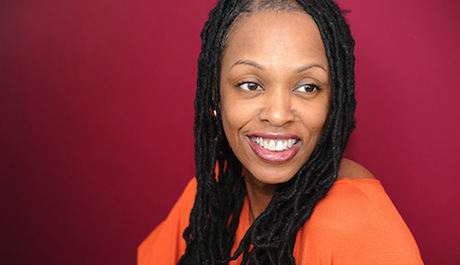 In a section on “Spiritual and Nature Journaling,” Jackee Holder has contributed an essay on “Nature Metaphors for Journaling and Therapeutic Writing.” Jackee lives “in the heart of what was once the great North Wood that covered most of South London.” I love her idea of creating a personal deck of questions using paper luggage tags or something similar. Tree metaphors leading to questions could include such words as rooted, branching out, going out on a limb, blossoming, letting go, planting, seed, growing. (Photo of Jackee Holder)
In a section on “Spiritual and Nature Journaling,” Jackee Holder has contributed an essay on “Nature Metaphors for Journaling and Therapeutic Writing.” Jackee lives “in the heart of what was once the great North Wood that covered most of South London.” I love her idea of creating a personal deck of questions using paper luggage tags or something similar. Tree metaphors leading to questions could include such words as rooted, branching out, going out on a limb, blossoming, letting go, planting, seed, growing. (Photo of Jackee Holder)
The section entitled “Journaling with Groups and Leaders” includes an essay by Ahava Shira, PhD who co-wrote Writing Alone Together: Journalling in a Circle of Women for Creativity, Compassion and Connection with Lynda Monk and Wendy Judith Cutler.
I was also glad to see “The Women’s Writing Circle: Creating a Community Space Through Writing and Sharing” by Nancy Johnston and Shehna Javeed. I appreciate what the two women have to say: “Bringing women writers together to write in a safe, inclusive, and supportive space supports their self-expression, confidence as writers, and community building.” Nancy and Shehna live in Toronto where Nancy is an associate professor who teaches writing and courses on disability studies at the University of Toronto Scarborough. Shehna has had a long career in higher education administration and student advising.
In the “Techniques and Applications” section is an essay by Cynthia Holloway Kelvin entitled “Journaling with Poetry: Embracing Change Through Poetic Process.” Cynthia is a clinical psychologist, creative therapist, and performance consultant who, in her essay, offers a three-part process including movement.
Whether you are exploring the use of journaling in your professional or in your personal practice, there is lots of support here. And if you already have a regular journaling practice and thought you knew all there is to know, not so! There are so many rich resources in Transformational Journaling for Coaches, Therapists, and Clients, gathered into one place, with more than 50 journaling experts offering renewal and rejuvenation through journaling. As the co-editors say: “Journaling is an essential tool and practice for living a more conscious and awakened life.”
by Mary Ann Moore | Aug 25, 2021 | A Poet's Nanaimo
Wherever our ancestors lived, they gathered in circles around a fire. Through the years we’ve gathered in circles in various ways such as quilting, for prayer, women’s consciousness raising, for self-help and for honouring the changing seasons.
A poem by Danusha Lameris, “Small Kindnesses,” includes a reminder of how much we’re missing without the circle around the fire:
We have so little of each other, now. So far
from tribe and fire.
I began offering women’s writing circles in 1997 as a way to be together with our stories, each having an opportunity to be seen and heard. My motto when I began was: “Be seen. Be heard. Be amazed at what comes out of the stillness.”
In the writing circles I offer, we are a community, creating and celebrating in a form of ceremony that awakens and honours our own spirits and the seasons including the seasons of our lives. Now that September is approaching, it’s time to call the circle again, gathering women for sox-week circles to begin in person in Nanaimo on Wednesday, September 8 and via Zoom on Thursday, September 9. (I’ve included info about both circles at the end of this blog.)
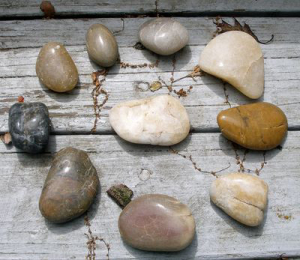 “I’ve always wanted to write but I don’t know where to start,” someone may say. “I don’t call myself a writer but I keep a journal,” someone else may say. All may have a longing for a place to be heard. In the Writing Life circle you are supported by guidelines that offer a structure to explore within, as well as by one another. You can honour and give voice to your longings and dive into the stories waiting to be told. Our stories, written and shared in the circle, take us into the realm of the sacred.
“I’ve always wanted to write but I don’t know where to start,” someone may say. “I don’t call myself a writer but I keep a journal,” someone else may say. All may have a longing for a place to be heard. In the Writing Life circle you are supported by guidelines that offer a structure to explore within, as well as by one another. You can honour and give voice to your longings and dive into the stories waiting to be told. Our stories, written and shared in the circle, take us into the realm of the sacred.
We are engaging in the ancient wisdom of the circle in a modern application. As Matthew Fox said in his book Creativity: “The building of strong souls and strong communities requires strong rituals – occasions that both link us to our ancestors and that speak in a language that is fresh and challenging.”
While there are many components to the circle such as connection, communication, compassion and curiosity, I’ve narrowed them down to ten.
The Ten Components of the Circle
Container
Writing is a ceremony. Ceremonies are meaning containers.
Gail Sher, The Intuitive Writer
The circle is a container, with a structure and circle agreements. As there is structure in a story, there is structure in the circle where we learn to stretch ourselves and also learn to pause. It is a simple yet powerful way to honour ourselves.
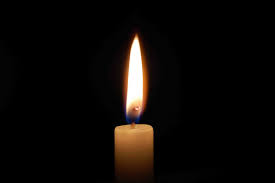 Ceremony
Ceremony
The candle is lit. Some sage may have been burned to clear the space. This holy smoke is an element of most spiritual practices of the world. The poetry and prose we create together defines our longing and creates a ceremony of stillness and consciousness.
Conversation
For all creativity is communication; it is the utmost in communication, the telling of our story, our hearts, our truth, our inner wisdom, our search for beauty, and our telling of pain.
Matthew Fox, Creativity
We live in a noisy era where the levels of sound increase as the needs of people to be heard become desperate. In the circle we sit down and listen with an intentional conversation.
Composting
What we may see as scraps for the compost pile can becoming nourishing for the soil/soul. The ideas percolate for awhile and as various elements come into assist them such as the support of others in the circle, sparkling imaginings can result. Out of the daydreams, are ideas for your own stories from life.
Calling the Circle
When I put the word out about a new writing circle, I don’t think of “marketing” but rather calling people back to the circle. “A circle is not just a meeting with the chairs rearranged. It is a return to an original form of human community, as well as a leap forward to create a new form of community,” Christina Baldwin says in Calling the Circle. “Calling the circle is a declaration of readiness to link where we came from, where we are, and where we may go.”
Coming Home
I read Christina Baldwin’s book on journaling, One to One, in the 1970s and went on to read her other books on journaling and on the circle. She is a pioneer in journaling and circle work. “I want to come home to the earth again,” she wrote. Simply sitting and listening to ourselves and one another can bring us home.
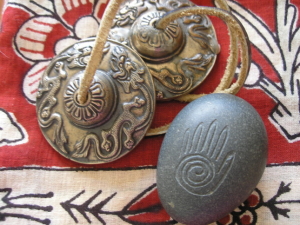 Centre
Centre
The centre of the circle where I’ve placed a candle, a talking piece, and the ting sha to ring our beginning represents the great good or great spirit. As we look to the centre of ourselves, we look to the centre of the circle for strength, guidance and wisdom. The centre of the circle is like the centre of the medicine wheel, a cauldron full of possibilities.
Creativity
“The Celtic imagination loved the circle,” John O’Donohue said. “It recognized how the rhythm of experience, nature, and divinity followed a circular pattern.” The circle is a place to get in touch with all the ways in which we are creative, to remember the joy we experienced from planting a garden or creating a collage of sticks and stones on the beach or by picking up a musical instrument. In the circle we may do some collage, take a walk to loosen the ideas, create paint chip poems or a group poem, and read a poem together one line at a time.
I like what Flora Bowley says in her book The Art of Aliveness: “Now, more than ever, applying the philosophies of the creative process to our lives and to our world is not only helpful, it’s vital.”
Community
Ideally, community is a place where we can meet with others wholeheartedly to celebrate our sameness and our differences. It’s a place where we get to live up to our full potential and are supported for it. In the circle we create a community where we learn what it’s like to be all we can be and we take those experiences into creating healthy communities in our neighbourhoods and workplaces.
Celebration
How wonderful it is to celebrate together as each woman is honoured and each rite of passage is acknowledged. “Won’t you celebrate with me,” Lucille Clifton said in her poem with that title.
won’t you celebrate with me
what i have shaped into
a kind of life? i had no model.
born in babylon
both nonwhite and woman
what did i see to be except myself?
i made it up
here on this bridge between
starshine and clay,
my one hand holding tight
my other hand; come celebrate
with me that everyday
something has tried to kill me
and has failed.
I look forward to gathering in the circle in Nanaimo as well as on Zoom with women who are further away. “Keep holding the hearth – these sometimes nearly invisible islands of calm and circle and feminine energy are the soul portals of the world at this chaotic and dangerous time,” Christina Baldwin wrote to me many years ago. How accurate those words are for us today.
There is a fire of welcome in my Nanaimo living room, although not a literal one, as well as on Zoom where we can see and hear one another to keep the embers glowing. It can become a sacred place.
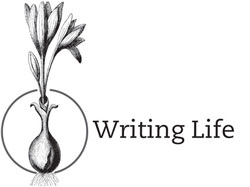 Writing Life women’s writing circles
Writing Life women’s writing circles
Nourish Yourself. Honour Your Voice. Write Your Stories.
Writing Life women’s writing circle in person in Nanaimo
Theme: Where Many Streams Meet
In the Writing Life women’s writing circle, you will find your voice and trust it as you’ll learn to trust the people on the journey with you. You’re not alone. Sing your song and dance your truth as you realize your stories as a place where many streams meet. Notes and handouts will be sent to those who happen to miss a week.
Wednesday, September 8 to Wednesday, October 13, 2021 from 10 a.m. to 12:30 p.m.
(six Wednesday mornings)
+ a Writing Life salon for sharing your work from the six-week writing circle on Wednesday, October 20
Fee: $270 payable by cheque or e-transfer
You can be in touch with questions or to save you a space in the circle by emailing me at creativity@maryannmoore.ca.
Writing Life women’s writing circle via Zoom
Theme: Where Many Streams Meet
In the Writing Life women’s writing circle, you will find your voice and trust it as you’ll learn to trust the people on the journey with you. You’re not alone. Sing your song and dance your truth as you realize your stories as a place where many streams meet. Handouts will be sent via email before each weekly circle. Notes will be sent to those who happen to miss a week.
Thursday, September 9 to Thursday, October 14, 2021 from 10 a.m. to 12:30 p.m. Pacific time
(six Wednesday mornings)
+ a Writing Life salon for sharing your work from the six-week writing circle on Thursday, October 21
Fee: $270 payable by cheque or e-transfer
You can be in touch with questions or to save you a space in the circle by emailing me at creativity@maryannmoore.ca.
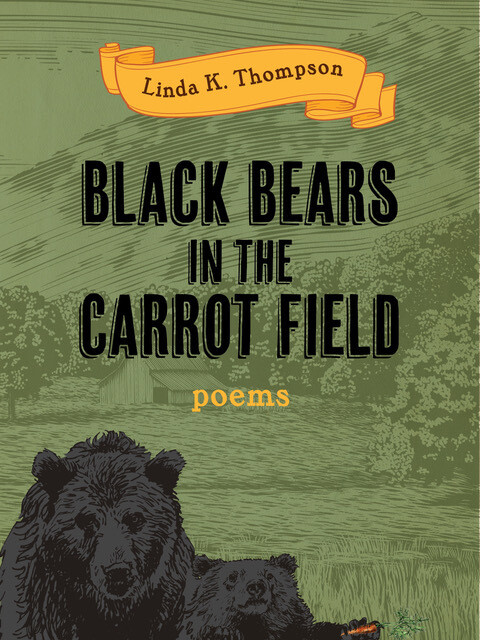
by Mary Ann Moore | Aug 2, 2021 | A Poet's Nanaimo
Isn’t that a great title for a poetry collection? Black Bears in the Carrot Field is Linda K. Thompson’s debut poetry collection, published in July 2021 by Mother Tongue Publishing on Salt Spring Island B.C.
The title comes from Linda’s poem “Saying Goodbye”:
My family back on the mainland are sleeping
tight beside tall rocks. Dreaming about black bears
in the carrot field, and the Eiffel Tower
that has appeared in the middle of the barnyard.
Yes, a blend of the practical and the imagined or rather, the metaphorical.
Linda includes some notes in the back of the book so we learn that Linda’s brother, Bruce Miller, told her that “his friend and fellow farmer, David Hellevang, told him the story of the black bears in the carrot field. David and his crew were in the front field digging potatoes and, unbeknownst to them, the bears were in the back field ripping through and chewing up his field of carrots. Such a metaphor for life, don’t you think? Sometimes you just can’t win for losing. But you keep on keeping on.” There’s Linda K. Thompson’s philosophy of life in a nutshell, or rather in a potato skin.
Linda kept on keeping on learning from various (and famous) poets, being encouraged by friends and family along the way and published her poems in several publications including her own chapbook entitled Four Small People in Sturdy Shoes (Hot Tomato Studios, 2013). Her work has recently appeared in Prairie Fire and Release Any Words Stuck Inside of You: Canadian Flash Fiction and Prose Poetry.
Among the teachers Linda makes note of is Susan Musgrave, another B.C. poet who spends most of her time on Haida Gwaii. In recent years, both Linda and I have attended poetry workshops with Susan and in 2006, I think it was, we attended Susan’s workshop at the Victoria School of Writing where we met.
Linda and I attended many poetry retreats with the late Patrick Lane who is acknowledged as providing Linda with the two opening lines to her poem “Near Nice, France – 1941:
A paper lies on my desk, one corner folded under.
I won’t want to write about love again.
At the end of her “thank-yous,” Linda says: “And to Patrick, who understood my poems best of all.”
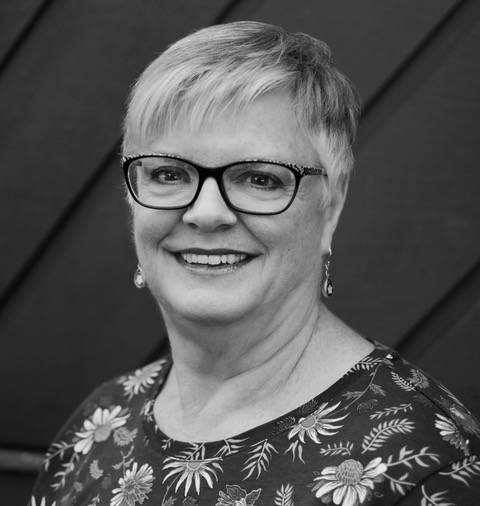 Patrick’s fellow poet in love and in life, Lorna Crozier, has been our teacher at retreats in recent years and Linda thanks Lorna for her “midnight ‘poetry intervention’ — shoring up my spirits when I might have stalled along the rocky road to publication.”
Patrick’s fellow poet in love and in life, Lorna Crozier, has been our teacher at retreats in recent years and Linda thanks Lorna for her “midnight ‘poetry intervention’ — shoring up my spirits when I might have stalled along the rocky road to publication.”
Linda was born in 1950 at Vancouver General Hospital and was raised on a potato and cattle farm in the Pemberton Valley, B.C., a flat river valley with rugged coast mountains rising sharply on both sides. As Linda says in her notes: “100 years later, Pemberton is well known for its superior seed potatoes.” Linda’s Great Uncle Jack Ronayne followed the suggestion of a Department of Agriculture representative who, in 1922, thought farmers ought to take advantage of “this unusual isolation to develop and grow a disease-free seed potato.”
Linda has lived for many years in Port Alberni on Vancouver Island.
I asked Linda about her poem “My Story Begins” and what she meant by “thimble babies / that left the house in the night,” and I should have figured who she is acknowledging as the next lines are:
brothers and sisters that never
quite took, but we loved them anyway,
like we loved the eggs in the hatcher:
for the mystery of them.
Just like “old home week” as we call it when we run into old friends, Linda names lots of them including a couple of cows, Bopper and Fudge, in her poem “Cows in the Family.”
Linda may have known Kathleen and Steve and of course her sister Janet. Other may have been made up but sure have a “real” ring to them such as Dick Black, Ethyl Peach and Bud Fournier in her poem “Bob’s House. (There was also a family English sheepdog named Bob when Linda was young.)
The places beyond Pemberton in Linda’s poems include Taos, New Mexico where Linda attended a poetry workshop and still recalled her father in the cottonwood. (“Courtyard in Taos”) “Near Nice, France – 1941” is written in the voice of Monique, one of Henri Matisse’s models.
“Buffalo in Yellowstone” describes the narrator with Bob (there he is again!) and she says:
I had lots of time
to think about old boyfriends, which I do now and then,
when I’m feeling life is less than I had expected.
As for “Gone to Windsor,” a prose poem, one never knows what is fact and what is made up. We poets do that sometimes i.e. make things up.
You can count on humour throughout Linda’s collection. That’s what we always looked forward to at poetry retreats when Linda would read a poem she had worked on, long into the night, the day before. “Ye Olde Burd Turd Grocery” is one of the places she notes in “Mr. Carlisle” as well as the “Cut to the Chase Beauty Salon.”
There is much poignancy too such as in “Bring This Stone to the Grave.” The title is beautiful and the poem is a gorgeous memory of the pastures, “last fall’s potato fields,” the orioles and waxwings, and a stone “smooth as one of Father’s old Viyellas. The last lines are:
Still, the sun across the cottonwoods that line the Lillooet
will nearly break your heart.
Wow.
Black and white photos throughout the book, like a family album, are from Linda’s collection as well as from Pemberton & District Museum & Archives Society. The first photo is of Linda as a baby with her parents: Elsie Glover and Don Miller. It was taken in 1950, as Linda notes, “near Kamloops on trip home from Vancouver to purchase a new Chev truck and drive it to Lillooet to be loaded on PGE and delivered to Pemberton. There was no road in or out till the mid 60s.”
The next photo is of Don and Elsie’s farm c.1975, “looking south towards Mount Currie from the farmhouse.” The photo acts as a background to Linda’s poem “Home Ground.”
Hippocrates believed humans absorb the topographical influence
of the place they are born and separation from this place
can be injurious to one’s health. Susan tells me this is called “vivaxis.”
I do not know the word. But I know the feeling.
What a marvelous collection of poems celebrating family and place. While letting us know about a particular locale in British Columbia, Canada, the poems can’t help but hearten readers to remember their own beginnings and the “topographical influence of a place”.
You can order a copy of Black Bears in the Carrot Field from your local independent bookstore or directly from Mother Tongue Publishing. There is free shipping within North America.
Linda has some B.C. readings coming up:
September 25 at the Pemberton Museum
October 2 at the Victoria Writers Festival
October 16 at the Gabriola Library with Bill Stenson
I’ll ask her if she has any plans for Windsor.
by Mary Ann Moore | Jul 25, 2021 | A Poet's Nanaimo
I wonder if it’s “the” writing life or “a” writing life? I suppose it’s “my” writing life I’m about to describe as while all writers write, each of us approaches our practice differently.
Annie Dillard called her book The Writing Life and I rather like that title so used it for this blog. There are obvious similarities among writers’ lives: we all write whether for publication or to record and explore life’s journey. Sometimes we don’t write but it’s writing that sustains us, nourishes us, keeps us connected to all that was, that is and that will be.
When writers say they’re writing, they could be creating new work or attending to the myriad of other aspects of their writing life. I like to call my “to do” list:
Passions + Possibilities.
Ideas
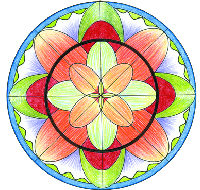 There are always ideas and one of those good ideas is to capture them in a notebook that can include questions and thoughts about future possibilities. Sometimes those ideas don’t take too long to become reality. I once created a small collage with a door and thought of a title for a poetry workshop: “Poetry as a Doorway In . . . and a Welcome Home.” Not too long after, I began offering writing circles at Bethlehem Centre in Nanaimo with that title and am now leading a Writing Life women’s writing circle with the same theme. The mandala shown at the left is titled “Come to Centre” and is by Sarah Clark. It’s the symbol I use for the “Poetry as a Doorway In” writing circles.
There are always ideas and one of those good ideas is to capture them in a notebook that can include questions and thoughts about future possibilities. Sometimes those ideas don’t take too long to become reality. I once created a small collage with a door and thought of a title for a poetry workshop: “Poetry as a Doorway In . . . and a Welcome Home.” Not too long after, I began offering writing circles at Bethlehem Centre in Nanaimo with that title and am now leading a Writing Life women’s writing circle with the same theme. The mandala shown at the left is titled “Come to Centre” and is by Sarah Clark. It’s the symbol I use for the “Poetry as a Doorway In” writing circles.
The “ideas” notebook could be a place to keep lists so they’re all in one place. I have a list for blog ideas, book review ideas, and ideas for future writing circles. And I still get ideas for a novel I wrote a long time ago called “Ordinary Life” as well as ideas and quotes for a personal essay I’m working on.
Already in the World
Writers are not necessarily good promoters of their own work but it must be done to let others know the work exists. Once the book is available, it needs to be nurtured along it’s path in the world otherwise know as publicity and marketing.
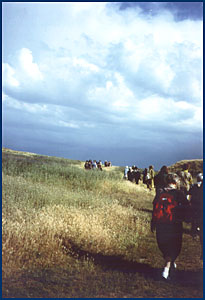 The image to the left is from the cover of Writing to Map Your Spiritual Journey, a writing resource I have available through the International Association for Journal Writing (IAJW). While it’s noted on my website and visitors to the IAJW site will see it, I do like to let people know, which I can, that it’s available. So I’ll provide a link right here, right now!
The image to the left is from the cover of Writing to Map Your Spiritual Journey, a writing resource I have available through the International Association for Journal Writing (IAJW). While it’s noted on my website and visitors to the IAJW site will see it, I do like to let people know, which I can, that it’s available. So I’ll provide a link right here, right now!
While Writing to Map Your Spiritual Journey is available digitally, I would also like to have print versions done. That will involve having some typos corrected and having the graphic designer, Mark Hand, get it ready for the printer.
Writing Home: A Whole Life Practice is already in the world as it’s a book that is part of a mentoring program I offer. I’m out of books though so need to do a second printing and I’d like to make it available for anyone i.e. without the need to be part of the mentoring program. That involves some tending to corrections as well which can be done with Sarah Clark who is my own in-house designer!
Proposals
When a project or poem is done, it’s time to send it out into the world. That seems a better plan to me than filing it away. There are other ways to share of course such as in a letter to a friend or in a circle of friends.
I have a collection of poems that I call “Modern Words for Beauty.” Many of them were started while on retreat with other poets so were shared in their earlier versions. I’ve been looking for a publisher for this second volume of my poetry. One of the “rejection” emails I received said said that writers must persist and indeed we must.
Praise
Every
Realization
Surely and
Instinctively: a
Soulful
Testament
I’m working on some personal essays and sending them out one-by-one to contests with literary journals. I like contests as there is a reasonable timeframe for hearing back. One of my essays began with an idea proposed to the co-editor at Freefall Magazine. I worked with Crystal MacKenzie over many months and my essay, “Frogs Fell from the Sky: Fiction in Poetry” appeared in the spring issue of Freefall. You can also read it online here.
One Main Project
Creativity coach Eric Maisel who is one of my fellow journal council members with the IAJW, says writers and artists ought to have one main project. That does make sense to me. While I work on individual essays that could become a collection and the other things noted above, my main project is “Inside the Treasure House: Ceremonies + Practices for Your Writing life.”
A Table of Contents is serving as my outline as I write about my writing life with passion and possibility. Writing is my anchor so sticking to it during the pandemic year was grounding and sustaining.
Journaling
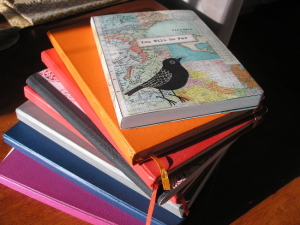 Whether I’m working on any of the above aspects of my writing life, journaling is at the foundation of all of it. It’s what I do first thing in the morning when I write down my dreams and ponder the day ahead. I begin with greeting my guides including the trees right outside my window and the mountain known as the Grandmother of All Surrounding Mountains to the Snuneymuxw people.
Whether I’m working on any of the above aspects of my writing life, journaling is at the foundation of all of it. It’s what I do first thing in the morning when I write down my dreams and ponder the day ahead. I begin with greeting my guides including the trees right outside my window and the mountain known as the Grandmother of All Surrounding Mountains to the Snuneymuxw people.
I often take a flower essence (which I offer in the writing circles as well). Right now, I’m taking a combination essence called “Following Desire” from Raven Essences. It’s made up of several flowers and other combinations including Gloxinia, Mock Orange, Cuban Hibiscus, Portia Tree, Castor Bean, Columbine and Sedum.
I usually pick a card or perhaps three from “On a Positive Note”, mandala meditation cards by Sarah Clark. I read a poem or some prose from an inspiring book. Lately I’ve been reading The Art of Aliveness: A Creative Return to What Matters Most by Flora Bowley (Hierophant, 2021). I appreciate Flora’s question: “In times of transition, circle back to this potent question: Would I rather be comfortable and stagnant or uncomfortable and alive?”
Journaling is what we do in the Writing Life women’s writing circle and much of it becomes part of longer pieces or poems that can be worked on and shared again. The same happens when journaling on my own. I take my writing from the writing table in my bedroom across the hall to my office where I have my computer and all sorts of books to which to refer in a beautiful space.
Aides to the Writing Life/A Basket of Tools
 All of these things, noted above, are aides to my writing life as well as a creative and supportive partner, a beautiful home in which to live and create, a regular income in the form of an Old Age Pension, and writing friends. Besides weekly writing circles, I like getting together with other women writers to chat. Literary events have been a great way to connect to other writers and I look forward to in-person events soon. (I am thankful for Zoom for the times when we couldn’t meet in person and as an added bonus, seeing people who live far away.) As I’ve been going to poetry retreats for a long time, I am part of a community of writers that will begin to meet again in person, possibly in the Fall.
All of these things, noted above, are aides to my writing life as well as a creative and supportive partner, a beautiful home in which to live and create, a regular income in the form of an Old Age Pension, and writing friends. Besides weekly writing circles, I like getting together with other women writers to chat. Literary events have been a great way to connect to other writers and I look forward to in-person events soon. (I am thankful for Zoom for the times when we couldn’t meet in person and as an added bonus, seeing people who live far away.) As I’ve been going to poetry retreats for a long time, I am part of a community of writers that will begin to meet again in person, possibly in the Fall.
This is another bonus to sending things out and having them published as books or in anthologies and literary journals. You get to share your work with other writers and readers and celebrate the written word together.
Flora Bowley writes about “Your Basket of Tools” in her book noted above: The Art of Aliveness. She says that her basket of tools “took many years of dedicated work and curiosity to acquire, and I’m so grateful I have them when I need them. At the same time, I’m careful to keep the basket behind me when I’m painting.” She doesn’t want to give the tools priority over her blank canvas. She wants to keep “the channel open between me and the uncertain unfolding of my current creation.”
“The blank canvas is where life unfolds,” Flora says. Her wisdom very much applies to writing. (She writes books too!) She finds “the most life-giving practice is to find a balance between our well-intentioned routines and the space we need to keep free for improvisation, surprise and change. We keep our basket of lived experience behind us, while keeping the path of possibility open before us.” I could also say: The blank page is where life unfolds.

 Hopefully it was the gradual lessening of the lockdown so that Sharon could see her friends again. Sharon has calculated how many years she has left and I find myself thinking of that as well. Most important, is how we spend our days: writing, not for any awards, but because we need to. And while we’re at it, we can celebrate the desire and imagination that continues to nourish us.
Hopefully it was the gradual lessening of the lockdown so that Sharon could see her friends again. Sharon has calculated how many years she has left and I find myself thinking of that as well. Most important, is how we spend our days: writing, not for any awards, but because we need to. And while we’re at it, we can celebrate the desire and imagination that continues to nourish us.
 There are many benefits to journaling as the editors and writers of this new, comprehensive collection, Transformational Journaling for Coaches, Therapists, and Clients (Routledge, 2021) illustrate. Among them are gaining perspective, increasing clarity with life decisions, tapping into inner ways of knowing, noticing and clearing limiting beliefs and patterns, and writing the story one wants for their life. As a journal keeper since I learned to write, I can agree with and affirm all of those benefits of personal writing. “Our life narratives . . . hold the thread of our values and desires, while also weaving us into connection with others and the world we live in,” say the co-editors Lynda Monk and Eric Maisel.
There are many benefits to journaling as the editors and writers of this new, comprehensive collection, Transformational Journaling for Coaches, Therapists, and Clients (Routledge, 2021) illustrate. Among them are gaining perspective, increasing clarity with life decisions, tapping into inner ways of knowing, noticing and clearing limiting beliefs and patterns, and writing the story one wants for their life. As a journal keeper since I learned to write, I can agree with and affirm all of those benefits of personal writing. “Our life narratives . . . hold the thread of our values and desires, while also weaving us into connection with others and the world we live in,” say the co-editors Lynda Monk and Eric Maisel. Following her career as s a social worker, Lynda began a training and coaching business specializing in burnout prevention for helpers, healers, and leaders. Her contribution to the collection, “Journaling for Coach and Therapist Self-Care,” has five tips for helping professionals in which Lynda says: “Be sure that if you are recommending journaling to your clients, that you are also engaging with this transformational healing tool in your own life.” She says: “Write about how you are feeling and your own needs and responses, versus the details of your client’s situations.”
Following her career as s a social worker, Lynda began a training and coaching business specializing in burnout prevention for helpers, healers, and leaders. Her contribution to the collection, “Journaling for Coach and Therapist Self-Care,” has five tips for helping professionals in which Lynda says: “Be sure that if you are recommending journaling to your clients, that you are also engaging with this transformational healing tool in your own life.” She says: “Write about how you are feeling and your own needs and responses, versus the details of your client’s situations.” As Susan Borkin, PhD points out in “A Therapist’s Guide to Using Journaling with Clients,” “[Therapeutic journaling] is an evolving, creative, organic process with few actual rules.” Susan is a psychotherapist, speaker and author of three books on the transformative power of journaling. (Photo of Susan Borkin)
As Susan Borkin, PhD points out in “A Therapist’s Guide to Using Journaling with Clients,” “[Therapeutic journaling] is an evolving, creative, organic process with few actual rules.” Susan is a psychotherapist, speaker and author of three books on the transformative power of journaling. (Photo of Susan Borkin) In a section on “Spiritual and Nature Journaling,” Jackee Holder has contributed an essay on “Nature Metaphors for Journaling and Therapeutic Writing.” Jackee lives “in the heart of what was once the great North Wood that covered most of South London.” I love her idea of creating a personal deck of questions using paper luggage tags or something similar. Tree metaphors leading to questions could include such words as rooted, branching out, going out on a limb, blossoming, letting go, planting, seed, growing. (Photo of Jackee Holder)
In a section on “Spiritual and Nature Journaling,” Jackee Holder has contributed an essay on “Nature Metaphors for Journaling and Therapeutic Writing.” Jackee lives “in the heart of what was once the great North Wood that covered most of South London.” I love her idea of creating a personal deck of questions using paper luggage tags or something similar. Tree metaphors leading to questions could include such words as rooted, branching out, going out on a limb, blossoming, letting go, planting, seed, growing. (Photo of Jackee Holder) “I’ve always wanted to write but I don’t know where to start,” someone may say. “I don’t call myself a writer but I keep a journal,” someone else may say. All may have a longing for a place to be heard. In the Writing Life circle you are supported by guidelines that offer a structure to explore within, as well as by one another. You can honour and give voice to your longings and dive into the stories waiting to be told. Our stories, written and shared in the circle, take us into the realm of the sacred.
“I’ve always wanted to write but I don’t know where to start,” someone may say. “I don’t call myself a writer but I keep a journal,” someone else may say. All may have a longing for a place to be heard. In the Writing Life circle you are supported by guidelines that offer a structure to explore within, as well as by one another. You can honour and give voice to your longings and dive into the stories waiting to be told. Our stories, written and shared in the circle, take us into the realm of the sacred. Ceremony
Ceremony Centre
Centre Writing Life women’s writing circles
Writing Life women’s writing circles
 Patrick’s fellow poet in love and in life, Lorna Crozier, has been our teacher at retreats in recent years and Linda thanks Lorna for her “midnight ‘poetry intervention’ — shoring up my spirits when I might have stalled along the rocky road to publication.”
Patrick’s fellow poet in love and in life, Lorna Crozier, has been our teacher at retreats in recent years and Linda thanks Lorna for her “midnight ‘poetry intervention’ — shoring up my spirits when I might have stalled along the rocky road to publication.” There are always ideas and one of those good ideas is to capture them in a notebook that can include questions and thoughts about future possibilities. Sometimes those ideas don’t take too long to become reality. I once created a small collage with a door and thought of a title for a poetry workshop: “Poetry as a Doorway In . . . and a Welcome Home.” Not too long after, I began offering writing circles at Bethlehem Centre in Nanaimo with that title and am now leading a Writing Life women’s writing circle with the same theme. The mandala shown at the left is titled “Come to Centre” and is by Sarah Clark. It’s the symbol I use for the “Poetry as a Doorway In” writing circles.
There are always ideas and one of those good ideas is to capture them in a notebook that can include questions and thoughts about future possibilities. Sometimes those ideas don’t take too long to become reality. I once created a small collage with a door and thought of a title for a poetry workshop: “Poetry as a Doorway In . . . and a Welcome Home.” Not too long after, I began offering writing circles at Bethlehem Centre in Nanaimo with that title and am now leading a Writing Life women’s writing circle with the same theme. The mandala shown at the left is titled “Come to Centre” and is by Sarah Clark. It’s the symbol I use for the “Poetry as a Doorway In” writing circles. The image to the left is from the cover of Writing to Map Your Spiritual Journey, a writing resource I have available through the International Association for Journal Writing (IAJW). While it’s noted on my website and visitors to the IAJW site will see it, I do like to let people know, which I can, that it’s available. So I’ll provide a link
The image to the left is from the cover of Writing to Map Your Spiritual Journey, a writing resource I have available through the International Association for Journal Writing (IAJW). While it’s noted on my website and visitors to the IAJW site will see it, I do like to let people know, which I can, that it’s available. So I’ll provide a link  Whether I’m working on any of the above aspects of my writing life, journaling is at the foundation of all of it. It’s what I do first thing in the morning when I write down my dreams and ponder the day ahead. I begin with greeting my guides including the trees right outside my window and the mountain known as the Grandmother of All Surrounding Mountains to the Snuneymuxw people.
Whether I’m working on any of the above aspects of my writing life, journaling is at the foundation of all of it. It’s what I do first thing in the morning when I write down my dreams and ponder the day ahead. I begin with greeting my guides including the trees right outside my window and the mountain known as the Grandmother of All Surrounding Mountains to the Snuneymuxw people.